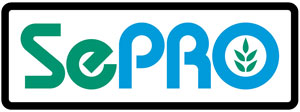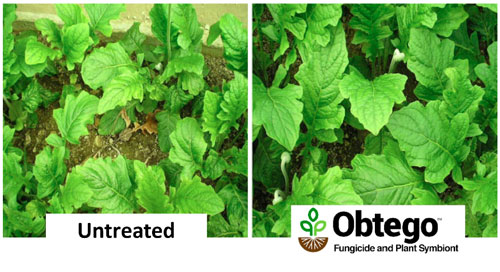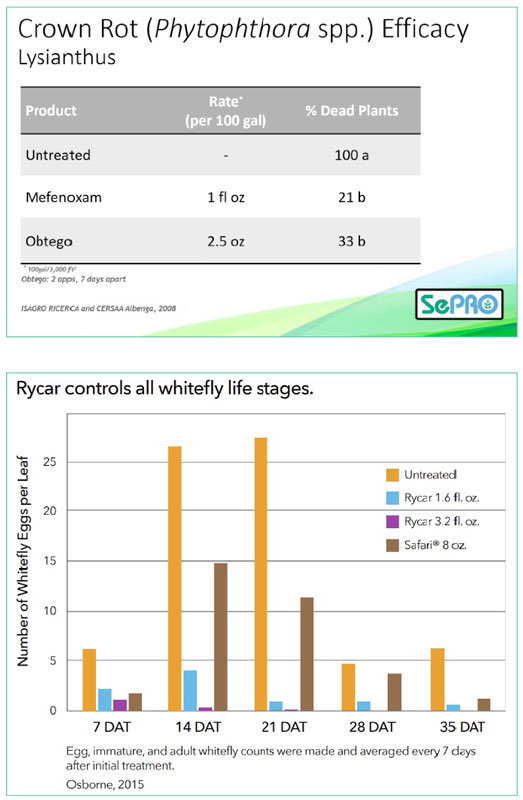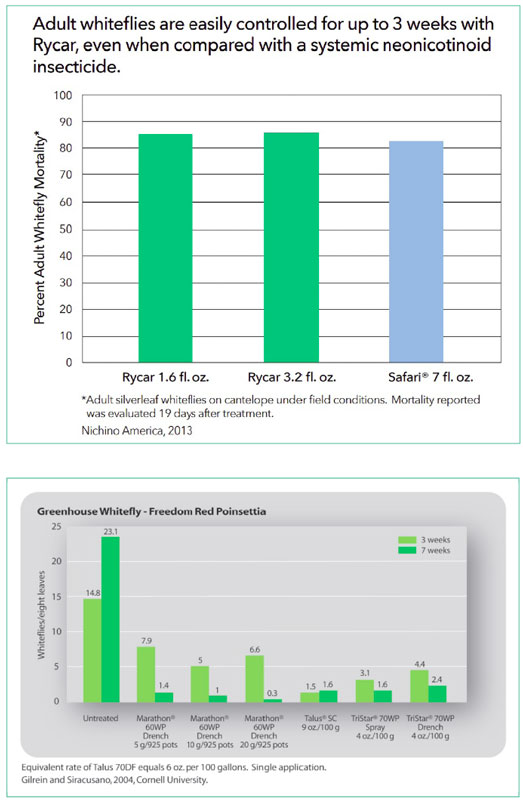5/1/2022
Plant Pest & Disease Management
Aaron Palmateer, Ph.D. & Dennis Bunkley

Pest and disease management in commercial greenhouse production is not easy. Once insect pests, mites and pathogens are introduced into the greenhouse, they often flourish. They feed on the plants and reproduce in an enclosed environment that provides highly favorable conditions.
It’s impossible to ensure all newly introduced plant material in your greenhouse is free of pests and pathogens. For example, the microorganisms that cause plant diseases can easily come in undetected and it’s far too common for growers to experience outbreaks of bacterial soft rot in propagation. These single-celled pathogens can cause latent infection. They remain hidden or dormant, showing no symptoms in the plant until after they’re introduced into the greenhouse. Even though they’re much larger than microorganisms, insects and mites can pass through undetected as well. Insects are elusive critters and often hide in the nooks and crannies of plant tissue. Thus, preventative measures are essential for effective pest and disease management.
 Growers must develop efficient production plans that incorporate tactics to maximize plant health and minimize opportunities for pest and disease outbreaks. Plants start from seed or cuttings, and throughout the production process, are often moved from one greenhouse operation to another. This practice comes with great potential for plant pests and these newly introduced populations may be pesticide-resistant, creating yet another management challenge. Integrating a biological fungicide such as Obtego into the early stages of propagation will help with rooting and provide protection from seedling disease pathogens. Once applied, the beneficial fungi colonize the rhizosphere and can provide long-lasting protection.
Growers must develop efficient production plans that incorporate tactics to maximize plant health and minimize opportunities for pest and disease outbreaks. Plants start from seed or cuttings, and throughout the production process, are often moved from one greenhouse operation to another. This practice comes with great potential for plant pests and these newly introduced populations may be pesticide-resistant, creating yet another management challenge. Integrating a biological fungicide such as Obtego into the early stages of propagation will help with rooting and provide protection from seedling disease pathogens. Once applied, the beneficial fungi colonize the rhizosphere and can provide long-lasting protection.
Diseases
Gray mold or Botrytis blight is likely the most common disease of greenhouse crops. Losses due to Botrytis go beyond the greenhouse, where the disease is common on plants during shipping. Botrytis cinerea is a fungus that has the capability of living on both dead and live plant material, which makes it one of the more challenging plant pathogens to control. It can invade and damage just about any part of the plant, but blight mostly occurs on more tender plant tissues, including the flowers, buds and leaves.
 It targets weakened and damaged tissue of the crop. Botrytis can quickly invade damaged plant tissue, including freshly cut tissue, during pruning and propagation. This frequently results in stem lesions and dieback, and has been reported to inhibit rooting on infected cuttings. When it comes to effective management of prolific pathogens such as Botrytis, preventative fungicide applications are essential. Numerous fungicides have been developed for use on greenhouse plants to control fungal plant pathogens such as Botrytis. SePRO has Decree, which provides protection and control of Botrytis. Decree is the only FRAC group 17 fungicide available for use in greenhouse production, which makes it an excellent choice for resistance management.
It targets weakened and damaged tissue of the crop. Botrytis can quickly invade damaged plant tissue, including freshly cut tissue, during pruning and propagation. This frequently results in stem lesions and dieback, and has been reported to inhibit rooting on infected cuttings. When it comes to effective management of prolific pathogens such as Botrytis, preventative fungicide applications are essential. Numerous fungicides have been developed for use on greenhouse plants to control fungal plant pathogens such as Botrytis. SePRO has Decree, which provides protection and control of Botrytis. Decree is the only FRAC group 17 fungicide available for use in greenhouse production, which makes it an excellent choice for resistance management.
Though fungi cause more plant diseases, bacterial diseases can be some of the most difficult to manage. Bacteria are single-celled organisms that can be seen only with a powerful microscope. Though some bacteria do produce spores, those that cause plant diseases do not. Bacterial diseases of ornamental plants include leaf spots and blights, soft rots, vascular wilts, crown gall and cankers.
Bacteria cannot penetrate the cuticle of plants, so they must enter the plant through a wound or natural opening. Bacteria are dependent on outside agents for dispersal. Splashing water is the main way that bacteria are disseminated. Another common way of dispersal is through human contact. Simply touching an infected plant and then touching a healthy plant can spread many bacterial pathogens. SePRO has several solutions to assist with managing bacterial pathogens. CuPRO 5000, Junction and Camelot O are all copper-based products that offer protection and control of bacteria, as well as many other plant pathogens, including fungi, algae and oomycetes (i.e., Phytophthora and downy mildew).
Insects
Although there are numerous species of whiteflies, the sweet potato whitefly (Bemisia tabaci), banded winged whitefly (Trialeurodes abutiloneus) and greenhouse whitefly (T. vaporariorum) appear to be most common in greenhouses and nursery production. All of these whiteflies feed on plant sap from the phloem. Colonies occur on the underside of leaves, making them more difficult to target with spray applications.
Over the years, sweet potato whiteflies have developed resistant populations that can withstand triple the amount of product use that was successful a decade ago. Sweet potato whitefly populations can be grouped into B and Q biotypes that are identified using molecular testing methods. Growers should test for whiteflies because product rotation can impact shifts in the pest population, making effective control much more challenging. Whitefly biotype testing is currently a free service and growers can learn about submitting samples here: http://mrec.ifas.ufl.edu/lso/bemisia/bemisia.htm.
 SePRO has two excellent solutions for controlling whiteflies, including Rycar and Talus 70DF. Both insecticides are compatible with beneficial mites, and when used in rotation, provide effective control of whiteflies, including B and Q biotypes.
SePRO has two excellent solutions for controlling whiteflies, including Rycar and Talus 70DF. Both insecticides are compatible with beneficial mites, and when used in rotation, provide effective control of whiteflies, including B and Q biotypes.
Rycar is a unique chemistry that provides excellent plant safety and control of all biotypes of whiteflies, as well as other insects, such as mealybugs, leafhoppers and chili thrips. The translaminar activity of Rycar penetrates the leaf cuticle, allowing for more movement inside the plant leaves. Once insects contact and/or ingest Rycar, they’ll stop their damaging feeding activity within two hours. As a group 9B insecticide, Rycar immediately causes a disoriented state in the insects. The insects are unable to eat, fly or crawl normally and will begin to die within 48 hours.
Talus 70DF Insect Growth Regulator has proven to be an excellent tankmix partner for control of many damaging insects, including whitefly, by breaking the insects’ lifecycle.
Talus 70DF is deadly against the nymphal stages and also inhibits chitin biosynthesis. It also suppresses the oviposition of adults, reduces the viability of eggs and features feeding cessation. Talus 70DF works via contact, ingestion and vapor activity. This helps it reach the areas where pests hide. Unique in its class as a group 16, Talus 70DF will fit into most any IPM and resistance management program. Please note that IGRs including Talus 70DF should not be applied if Q-biotype is confirmed or suspected. Rycar, however remains an excellent choice as a control for Q-biotype. Rycar and Talus 70DF are friendly to most BCA programs. GT
Dr. Aaron Palmateer is Technical Development Manager and Dennis Bunkley is National Sales Manager—Ornamentals for SePRO Corporation.